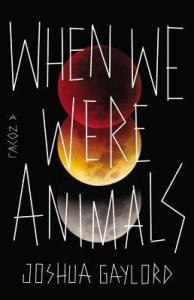 Despite being abandoned by her Danish mother when she was an infant and her Chilean immigrant father’s absence working as an international airline pilot, Maya was raised by her grandparents with spirited enlightenment and fiercely bolstering love. She was propped to have sound character, and her future held so much promise, until her Popo died when she was fifteen. Popo was her Nini’s second husband, but his presence meant the world to Maya. He had promised, “I swear I’ll always be with you.” Popo was a remarkably attentive surrogate parent to Maya, but following his death, whatever threads held her in check were unraveling at an alarming rate. The trio formed with her two girlfriends styled themselves as the “Vampires” and challenged each other to commit increasingly risky criminal acts and venture into dangerous sexual territory. By the time Maya is nineteen and living on the streets of Las Vegas, by the time she phones home, she’s on the run from criminals and the law. As she’s ushered onto a plane to exit the country and ride out the danger, her grandmother hands her a notebook for writing out her troubles as a tool for recovery, or as her Nini says it,
Despite being abandoned by her Danish mother when she was an infant and her Chilean immigrant father’s absence working as an international airline pilot, Maya was raised by her grandparents with spirited enlightenment and fiercely bolstering love. She was propped to have sound character, and her future held so much promise, until her Popo died when she was fifteen. Popo was her Nini’s second husband, but his presence meant the world to Maya. He had promised, “I swear I’ll always be with you.” Popo was a remarkably attentive surrogate parent to Maya, but following his death, whatever threads held her in check were unraveling at an alarming rate. The trio formed with her two girlfriends styled themselves as the “Vampires” and challenged each other to commit increasingly risky criminal acts and venture into dangerous sexual territory. By the time Maya is nineteen and living on the streets of Las Vegas, by the time she phones home, she’s on the run from criminals and the law. As she’s ushered onto a plane to exit the country and ride out the danger, her grandmother hands her a notebook for writing out her troubles as a tool for recovery, or as her Nini says it,
take advantage of it to write down the monumental stupidities you’ve committed, see if you can come to grips with them.
In the audiobook version I enjoyed, as the narrator began speaking in the voice of the 19-year-old female main character in Maya’s Notebook, she sounded far too mature, using unrealistic vocabulary and sounding too worldly. Soon, however, that didn’t matter because I was spellbound by Maya Vidal’s troubled past. She’d experienced complex problems and was running from drug lords, international criminals, and the FBI, and she comes from a highly unusual family; clearly her life was more complicated than an average teen girl’s. She was sent by her Chilean grandmother, her Nini, to Chiloé Island, perfect as a place for banishment or exile, to ride out the danger with an old friend of Nini’s, Manuel Arias. Manuel is a man with a mysterious and painful past as well. The narrative floats easily between Maya’s present in Chiloé and her past in Berkeley, California, then a rehab academy in Oregon, then in Las Vegas where she reaches the darkest pit of her degradation and suffering. Just when you think her story has been told already, it just gets deeper and more layered.
Maya’s Notebook is an Adult Fiction title which would likely appeal to many older teens, but the book contains very graphic scenes of criminality, violence (both sexual and drug-related), sexuality, and extreme drug use. It’s available in the WRL collection via regular print, audiobook on CD, e-audiobook, and in large print.












 The comparisons to Harry Potter are inevitable, but when Quentin Coldwater is recruited by Brakebills, a magical university hidden in upstate New York, he’s no wide-eyed eleven year old. Smart, anti-social, competitive, and melancholy, he’s designed his life to please Princeton’s admissions office. He took up performing magic tricks so that he could claim an extracurricular activity without actually having to interact with other people. Then he has one of those through-the-looking-glass, or rather, through-the-back-of-the-wardrobe moments, and finds himself on the grounds of Brakebills College for Magical Pedagogy, taking an incomprehensibly weird entrance exam. When it turns out there’s real magical talent contributing to his sleight-of-hand, Quentin takes about two minutes to realign his career goals. Magicianship beats his depressing real life any day of the week.
The comparisons to Harry Potter are inevitable, but when Quentin Coldwater is recruited by Brakebills, a magical university hidden in upstate New York, he’s no wide-eyed eleven year old. Smart, anti-social, competitive, and melancholy, he’s designed his life to please Princeton’s admissions office. He took up performing magic tricks so that he could claim an extracurricular activity without actually having to interact with other people. Then he has one of those through-the-looking-glass, or rather, through-the-back-of-the-wardrobe moments, and finds himself on the grounds of Brakebills College for Magical Pedagogy, taking an incomprehensibly weird entrance exam. When it turns out there’s real magical talent contributing to his sleight-of-hand, Quentin takes about two minutes to realign his career goals. Magicianship beats his depressing real life any day of the week. On a very cold January night, in a small Pennsylvania town, a nine-year-old girl with glasses shows up on the doorstep of Margaret Quinn. Margaret is a lonely widow whose only daughter, Erica, ran away from home as a teenager ten years earlier in 1975 with her boyfriend Wiley and hasn’t been seen in town since. The bespectacled girl says she’s an orphan and has never known her parents. She was looking for a warm place, and saw Margaret’s light. She begins to write her name, NOR, and Margaret finishes it, calling the girl Norah.
On a very cold January night, in a small Pennsylvania town, a nine-year-old girl with glasses shows up on the doorstep of Margaret Quinn. Margaret is a lonely widow whose only daughter, Erica, ran away from home as a teenager ten years earlier in 1975 with her boyfriend Wiley and hasn’t been seen in town since. The bespectacled girl says she’s an orphan and has never known her parents. She was looking for a warm place, and saw Margaret’s light. She begins to write her name, NOR, and Margaret finishes it, calling the girl Norah.
 Peter Høeg’s The Quiet Girl is one of the most interesting and complex books that I have recently read. Its twisting plot, multi-faceted characters, and elements of magical realism all require the reader to pay attention. It is attention well-rewarded though. Høeg writes beautiful sentences that resonate in the ear and on the tongue.
Peter Høeg’s The Quiet Girl is one of the most interesting and complex books that I have recently read. Its twisting plot, multi-faceted characters, and elements of magical realism all require the reader to pay attention. It is attention well-rewarded though. Høeg writes beautiful sentences that resonate in the ear and on the tongue.


